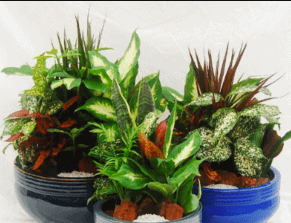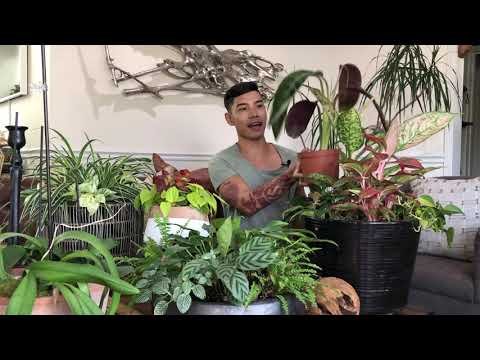A single plant is planted in a pot most of the time. The story thus far has been fairly ordinary, and perhaps even rather lonely. It is sometimes possible to combine your favorite plants in one pot for a miniature garden, somewhat successfully. Adding several different plants to a planter adds some flair to an indoor space or patio, and allows the plants to support each other as they grow. An equally friendly name for this approach to gardening is companion planting.
Why Companion Planting?

Planting plants that are compatible with each other can make best use of the natural relationship between plants by growing them close together. It will help the plants to exchange nutrients, provide shade, and provide physical support for each other. It will make them happy, and you will also notice the change.
How Do You Do It?
It’s important to first figure out which plants work well together, since different plants placed together in a pot must have similar conditions to thrive. Starting with a simple approach and developing it from there, for example, will produce better results than trying to combine a cactus and a fern. It is not unusual for succulents to grow together, and they are also very comfortable with cacti. When artfully arranged in a larger pot, these small plants look beautiful. There are also several other common houseplants that work well together, including Philondendrons, Scheffleras, and Peace Lilies. Moderate sunlight, humidity, and water are good for them, and they’ll enjoy being together with each other in a pot.
Moreover, these are the criteria to be considered:
- Light. Sort by low light versus bright light and direct versus indirect.
- Humidity. It is particularly moist for tropical plants, not so much for succulents.
- Temperature. During colder months, plants with sensitive to cold may have trouble on a drafty window sill; plants with sensitive to heat may have difficulty by heaters and vents.
- Thirst. Plants that need more water together will require less water, and vice versa.
- Pet-friendliness. You should keep toxic plants away from your pet; group them in a place where they cannot get to them.
- Looks. In addition, once you’ve selected the best groups, think about how they all look together to determine the final grouping. Plants with similar growth requirements and therefore complementary features tend to look good together since they are able to thrive together. Combine leaves of different sizes and shapes in an artful way. A variety of trees that are tall, ramble, and trail is a wonderful sight to behold. A design standard for clustering objects is to use an uneven number, such as three or five.
Trial and Error
Compare carefully the conditions under which your selections will grow if you have several plants in mind for matching. In terms of soil, water, light, and air, do they have similar requirements? You should then give your new team a trial at the spot you have chosen for them. If they like their new home, find an attractive container where they can all flourish together, and get them potting.
13 Houseplant Combination Ideas
In most cases, we grow one plant in a pot, but what most of us aren’t aware of is the Houseplant Combination, which we could actually use to grow multiple plants in the same container. Multiple plants can be displayed in a single container, saving you space and enhancing the beauty of your garden. That sounds fun, right? Check out these awesome combos!
Episcia, Calathea, and Lime Pothos
This exquisite combination of Episcia, Calathea, and Lime Pothos explodes different shades of green in one container. They require similar amounts of water and soil. The colors of the plant combination will also contribute to a calming effect in the eyes of the viewer.
Peace Lily, Kalanchoe, and Arrowhead
These white bracts of Peace Lily add a subtle sense of calm to the surroundings, which seem to pair well with the green leaves of Arrowhead and the thick green foliage of Kalanchoe. Their ease of growth and maintenance makes them perfect for beginners.
St. Anthony’s Turnip, Ranunculus, Grape Hyacinth, Daffodil,and Primrose
A colorful arrangement is created when you combine St. Anthony’s Turnip, Grape Hyacinth, Daffodil, and Primrose flowers. You’ll certainly make a drab place in your home look all the more welcoming if you have them.
Phormium ‘Maori Queen’ and Blue Chalksticks
It’s the perfect recipe for container planting in the shade! With their colorful foliage and pretty appearance, they will make your living space or any other room a pleasant place to enjoy.
Philodendron, Pothos, and Spider Plant
There are times when the simplest of plant combinations is the most effective. It is possible to grow Philodendron, Pothos, and Spider Plant in dry soil and in hard conditions. The arrangement is perfect for creating a jungle-like look.
Snake Plant, Yucca and ZZ Plant
Snake plant, yucca, and ZZ plant are among those plants that have leaves that are more decorative than flowers. Both plants do not require much attention and grow well in less water and sunlight, so they can be combined into a beautiful houseplant combination.
Moth Orchid, Parlor Palm, Southern Maidenhair Fern, and Emerald Ripple Peperomia
This arrangement is perfect for decking up your room with wide and bold leaves of fern, the broad and emerald ripple leaves of peperomia, coupled with the stunning flowers of moth orchid. Despite their bright requirements, these plants do not require prolonged sunlight.
Flapjacks, ‘Spaghetti Strap’ Agave, and ‘Hope’ Peperomia
It is a mesmerizing combination of green leaves that will surely enhance the look of any room. Due to their succulent nature, all three plants require less water. In addition to doing well in full sunlight, they are also a good option for hanging planters.
‘Shooting Star’ Hydrangea, Silver Lace Fern, Silver Dollar Maidenhair Fern, and Creeping Fig
In your interior, you will find a spectacular combination of fireworks-like white double flowers of hydrangea and cool, textured leaves of ferns and creeping fig. As long as you water them properly, these plants are easy to maintain.
Fuschia, Impatiens, Vinca Minor, and Lobelia
Come and enjoy the exotic flowers of Fuschia with their striking two-tone colors, as well as the blue blooms of Vinca minor. An excellent addition to your balcony or patio, this easy to maintain combination container would also be a great match for impatiens and lobelia.
White Queen Caladiums, Variegated Creeping Fig, and Whopper Begonia
The soothing pink color of the flowers combined with the colorful leaves of the caladium give any room an elegant look. These plants will all do well near a window where they will get dappled sunlight.
Lady Palm, Painted Fingernail Plant, and Firecracker Plant
Container arrangements are great for summer. The painted fingernail plants add a little color to the green foliage of the lady palm, while the firecrackers add some red flowers!
Peace lily, Peacock Plant, and Marble Pothos
If you put the Peacock plant in a container, its leaves can look charming. With the white flowers of a peace lily and the green foliage of marble pothos, it makes a beautiful arrangement!

